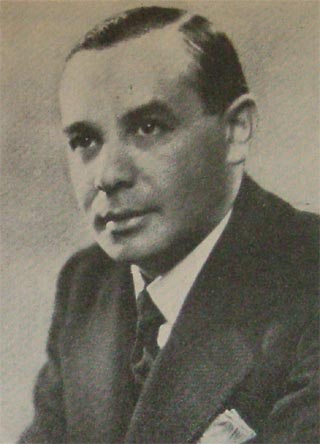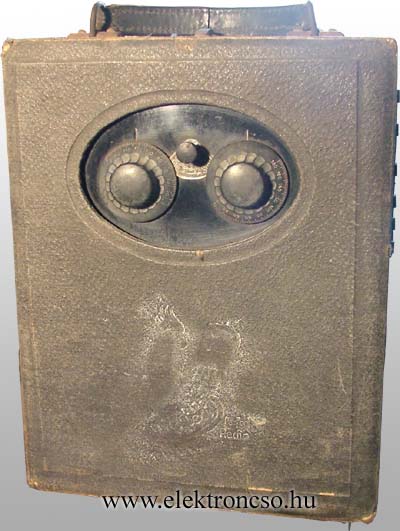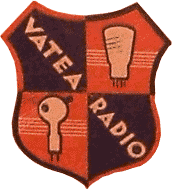
 |
FAQ |
|
The production of electron tubes has been initiated by Egyesült Izzó (United Incandescent and Electric Co.) in Hungary, in 1917. These tubes were later used also by the army during the I. World War. After the war, civil radio communication has begun to spread worldwide and radio-amateur movements began to boom as well. Handier than average people spotted the opportunity and started to construct radio devices. These amateurish devices were followed by factory-made radios. It can sound rather strange nowadays, but factories were unable to produce so many radios as demanded. Later, when the electron tube manufacturers realized this opportunity, they started to attach not only the electronic parameters, but also schematic radio circuit diagrams to their tubes. Unfortunately, people generally know very little about the Hungarian electron tube manufacturing, though Tungsram is a world-famous brand. Another world-famous Hungarian brand is Vatea and my goal is to introduce its history by this little script, since we there are very few things we can be proud of as much as of this little manufacturing plant, which could survive amidst the recession and crisis emerging that time, and contributed the development of the industry with such kind of inventions, the significance of which we can not properly appreciate till these very days.
 There have been operating two electron tube factories beside the Egyesült Izzó in Hungary: the Vatea and the John Kremenecky Co. Tungsten-Lamp Factory – the owner of the brand name Orion. Vatea has been founded by Imre Patay, who was born in 1894 and graduated at the University of Technology in 1917. He had taken several jobs until he joined the Egyesült Izzó in 1919 as a research engineer. He left the company in 1923 to establish a firm of his own with 7 of his colleagues. He opened a vacuum- and radio-manufacturing workshop at Budapest, in the 1st District, in the cellar of the house at Csaba Street 7/b. In the beginning, the workshop manufactured tungsten-fiber receiving tubes. In 1925, when the Royal Hungarian Post began to operate its 250 W broadcast station at Csepel, they undertook the renewal of the burnt tubes of the station. The renewal included the replacement of the burnt tungsten fibers. They worked under the utmost secrecy, since the supplier of the tubes – the Telefunken company – would have sued them if it had come into light. Later they also undertook similar renewal works for the broadcast station at Székesfehérvár. It is quite characteristic for the quality of the work that setting into operation of further broadcasting stations has been done by the Post almost exclusively with the renewed tubes. There have been operating two electron tube factories beside the Egyesült Izzó in Hungary: the Vatea and the John Kremenecky Co. Tungsten-Lamp Factory – the owner of the brand name Orion. Vatea has been founded by Imre Patay, who was born in 1894 and graduated at the University of Technology in 1917. He had taken several jobs until he joined the Egyesült Izzó in 1919 as a research engineer. He left the company in 1923 to establish a firm of his own with 7 of his colleagues. He opened a vacuum- and radio-manufacturing workshop at Budapest, in the 1st District, in the cellar of the house at Csaba Street 7/b. In the beginning, the workshop manufactured tungsten-fiber receiving tubes. In 1925, when the Royal Hungarian Post began to operate its 250 W broadcast station at Csepel, they undertook the renewal of the burnt tubes of the station. The renewal included the replacement of the burnt tungsten fibers. They worked under the utmost secrecy, since the supplier of the tubes – the Telefunken company – would have sued them if it had come into light. Later they also undertook similar renewal works for the broadcast station at Székesfehérvár. It is quite characteristic for the quality of the work that setting into operation of further broadcasting stations has been done by the Post almost exclusively with the renewed tubes.Patay lacked the capital to fulfill the growing demand, so he transformed his fairly profitable small business into a shareholding company. The VATEA Radio and Electrotechnics Co. has been established in November 20. 1925. Unfortunately the transformation did not improve the financial background of the company in the desired extent, thus Vatea began to conduct cooperative negotiations with Philips, which established its general agency as a shareholding company in Hungary right in 1925. Philips offered Patay that it will buy his firm with all of his patents. Negotiations lasted three years however and as Patay had to face new hardships during that time, Philips acquired a decisive share in Vatea by 1928. The new tubes developed by Vatea appeared on the market in 1925. The tungsten cathodes were changed by thorium cathodes and, in 1927, the application of oxide cathodes began which operated with higher efficiency and appeared on the market with miniwatt labeling. At that time, experiments were on the way to manufacture colloid cathode tubes. The outstanding fineness, solidity and evenness of the cathode made by colloidation meant a significant development compared to the rough, uneven structure of the cathodes manufactured that time. The electron tubes with cathodes manufactured with the colloidal process attained much greater conductance beside longer lifetime. This process also gained its deserved fame on the world market. The process was patented only a few years later, probably to repress the competitors. Vatea was worlds first in experimenting two- and three grid electron tubes (double tubes and pentodes). The highly successful double electron tube with thorium cathodes are the DGP3, and the DU412 types which were tubes with low anode voltage. That time electron tubes were typically applied in battery-powered devices, this is why low anode voltage has been so important. Another direction of the development aimed the better usage of space, which is shown outstandingly by the manufactured twin tubes. For example, a twin version of DU412 was the DDU412 electron tube. The three-grid tubes (pentodes) were also highly appreciated abroad, e.g. the Parisian C Borghi company advertised its radio devices with Vatea’s TN4060 twin tube. The Vatea or Patay early recognized the importance of marketing activity, so he published and advertised in many places. The developments of Vatea included the invention of gas-filled indicator tubes for the indication of the fine-tuning of radio-devices, before magic eyes appeared. In the beginning, these operated on the principle of rotating coil devices, but later were changed by completely electronic devices. These gas-filled indication tubes were the special products of Vatea. They were produced in three types, with the labeling of VT1, VT2 and VT8. Among the Hungarian radio factories, primarily Standard and Philips applied these in their devices. Vatea was also the first in making bimetal-operated gas-filled overvoltage arrester tubes which protected telephone devices. They were also first in dealing with measuring condenser emissions. They also dealt with the production of photocells, where cesium, potassium, rubidium metals were applied across glass panels with electrolysis to the bulb’s wall of the photocell as cathodes. Vatea tubes are characterized by balloon form. In the beginning, the air discharging of the tubes was conducted from the top of the balloon. None of the competing Hungarian tube factories dealt with the production of transmitting tubes, while Vatea had three types of them: EX410, EX412 and EX1050. The first number refers to the heating voltage, while the second number denominates the anode loss. These types were manufactured for amateur radios, but the 50W type was also recommended for sound amplifiers. Imre Patay was awarded with the doctor in technics title – which was quite rare that time – as a moral recognition of his results in vacuum electronics in 1929.  In 1930 on the pages of technical journals, not only electron tubes but a complete Vatea radio device appears: the Vatea Touring. The battery-powered device was suitable for receiving medium-wave transmissions and – what had been quite extraordinary even abroad that time – portable. Its dimensions: 24 x 31 x 7.5 cm, its mass (with batteries and headphone) 2.5 kg. It had one 1.5 V battery for heating and four, series connected 4.5 V batteries as power-pack. The casing of the device was made from varnis canvas - fashionable and preferred that time – fixed with glue on its wooden frame. If I am not mistaken, this material was originally used by bookbinders, but the inside of waiters’ purses was also made from this. Looking at the controls of the Touring, it has two large turning knobs with numeric scale – one of them is the heating resistance control knob which is also the turn off knob. For better visibility, we made the embossed inscriptions on the front and the back of the device visible with chalk powder. Unfortunately we don’t know any other radio device manufactured by Vatea. Even the members of RMK Nosztalgia Rádió Egyesület (RMK Nostalgia Radio Association) didn’t reported that they have seen any other radio device from Vatea, so probably other types of devices hadn’t been manufactured by the firm. In 1930 on the pages of technical journals, not only electron tubes but a complete Vatea radio device appears: the Vatea Touring. The battery-powered device was suitable for receiving medium-wave transmissions and – what had been quite extraordinary even abroad that time – portable. Its dimensions: 24 x 31 x 7.5 cm, its mass (with batteries and headphone) 2.5 kg. It had one 1.5 V battery for heating and four, series connected 4.5 V batteries as power-pack. The casing of the device was made from varnis canvas - fashionable and preferred that time – fixed with glue on its wooden frame. If I am not mistaken, this material was originally used by bookbinders, but the inside of waiters’ purses was also made from this. Looking at the controls of the Touring, it has two large turning knobs with numeric scale – one of them is the heating resistance control knob which is also the turn off knob. For better visibility, we made the embossed inscriptions on the front and the back of the device visible with chalk powder. Unfortunately we don’t know any other radio device manufactured by Vatea. Even the members of RMK Nosztalgia Rádió Egyesület (RMK Nostalgia Radio Association) didn’t reported that they have seen any other radio device from Vatea, so probably other types of devices hadn’t been manufactured by the firm.The small Vatea workshop at Csaba Street proved too small to the growing manufacture programs, so on August 31. in 1931 they purchased the estate of the Hungarian Horn Factory at Váci Street 169. Philips also took care of the welfare establishments of the workers; they gathered the necessary number of workers in advance - already in the period of construction – to begin production as early as possible. The rebuilding was done in 50 days, which can be attributed to the fast binding of bauxite cement. Many notabilities were invited to the ceremonial inauguration of the factory: even Archduke Ferenc József was present and also Béla Kenéz trade minister had a speech. The new production site meant widening of the product range and improvement in the quality of the products as well. From this time on, beside the regeneration of transmitting tubes, they also conducted the extensive production of transmitting tubes, mainly based on Dutch license. They’d also begin the production of 300kW transmitting tubes, based on the agreement with Philips, but unfortunately none of their issues mention these, probably because only the transmitting stations of the Post have applied these tubes.   In the beginning, the Vatea factory used an emblem with a shape of a lying elliptic and special font, which was trademarked in the December of 1924. This has been changed in 1932 to a crest-shaped emblem, which was divided into four parts. In the upper left quarter the word „VATEA”, while in the bottom right quarter the word „RADIO” can be read. In the upper right quarter a radio tube, while in the bottom left quarter the silhouette of a photocell can be seen. This can be well observed on the rectifier box of the emblem from the RE4200 This box is worth to be watched carefully, since the producers protected the tubes during transportation with an excellent package. Image of the inside of the box. In the beginning, the Vatea factory used an emblem with a shape of a lying elliptic and special font, which was trademarked in the December of 1924. This has been changed in 1932 to a crest-shaped emblem, which was divided into four parts. In the upper left quarter the word „VATEA”, while in the bottom right quarter the word „RADIO” can be read. In the upper right quarter a radio tube, while in the bottom left quarter the silhouette of a photocell can be seen. This can be well observed on the rectifier box of the emblem from the RE4200 This box is worth to be watched carefully, since the producers protected the tubes during transportation with an excellent package. Image of the inside of the box.The milled outline on the balloon of Vatea tubes is quite characteristic, in the middle of an octagon with sides arching inside the word „VATEA”, above some electronic data, beneath the labeling of the type can be seen (see here). This was later change to a simpler outline of two circles: between the two circles the word „VATEA”, below some technical data, inside the type label can be seen – like here. On May 1. 1939. the Vatea Rádiótechnikai Rt., the Philips Rádió and the Villamossági Rt. (Electronic Co.) merged, and the Magyar Philips Művek Rt. (Hungarian Philips Co.) was established. Thus the parent company seized the right to use the Vatea trademark abroad, but allowed the use of those patents which the parent company gathered from Radio Group (International General Electric Company and the Westingouse Electric International Company). So, Vatea became a manufacturing unit of the global firm, the use of its own brand name ceased, the tubes manufactured here bore the Philips brand name. After the merger, the Metalix-Röntgen Co. – which belonged to the former interest of Philips – gave the right to the Magyar Philips Művek to produce X-ray devices –which had been produced by the Vatea unit – but the manufacture of X-ray tubes hadn’t been initiated here. The transmitter division of Vatea has been developed in such an extent during the former cooperation that it took into his production profile the manufacture of domestic, special transmitters. This facilitated the creation of such kind of work division between Standard and Magyar Philips Művek, where Standard produced large transmitters, while the Magyar Philips Művek manufactured low and medium performance transmitters up to 30kW. For the production of transmitters, the Magyar Philips Művek had to request for the approval of the parent company. The firm got the approval for the manufacture and marketing of transmitters at May 12. 1941. After this, not only the tubing of the transmitters, but also the production of transmitters belonged to the interest of the company. The Magyar Philips Művek Rt. has been brought under State control in 1949. From January 1951, the factory operated under the name: Magyar Adócsőgyár (Hungarian Transmitter Tube Factory), and in 1966 it became one of the production sites of Egyesült Villamossági Rt. (United Electronics Co.), better known as Tungsram. Imre Patay, the establisher of the factory left it in the time of the merger in 1939 and founded a firm of vacuum techniques, where he also dealt with transmitter tube regeneration. This regenerating activity – which was probably in an early stage – could have been changed with the production of optic devices, but the war affected the development of the firm so heavily, that there’s very little we know about it. Patay emigrated as early as 1946 to Sweden and in 1947 to America, where he also dealt with vacuum techniques. He died in January 19. 1949. in the age of 55. |
| The pictures shown László Kógler tubecollect I say thanks for it. |
| [1] Molnár János: | A rádiótelefon elméleti és gyakorlati ismertetése – Műszaki könyvkiadó és sokszorosító intézet kiadása Budapest 1926 |
| [2] Patay Imre: | A thermikus elektronemisszió és az izzókathódok technikája. – Különlenyomat a Matematikai és Fizikai Lapok XXXV. Kötet július – decemberi füzetéből. Budapest 1929 |
| [3] Koroknai Ákos: | A Vatea és a Magyar Philips Művek szerepe az elektroncsőgyártásban 1928-1951. – Magyar Történelmi Társulat Üzemtörténeti Szekciója 1969. |
| [4] Jeney Károly: | A Tungsram Rt. története 1896 – 1919. – A Tungsram Rt. Gyártörténeti bizottsága. Budapest 1987 |
| [5] Hrabál László: | A Vatea gyár története – Rádiótechnika évkönyve 2000, 4 old.-13. ISSN 0557-6229 |